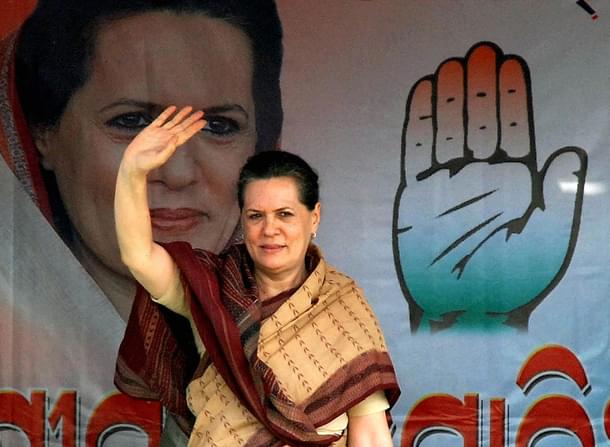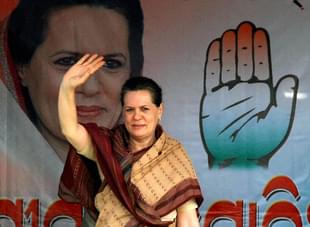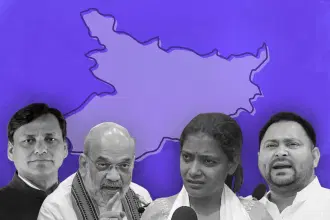Economy
Sonia’s Growth-Killer Land Law Is Being Cut To Size By States, Including Cong States
R Jagannathan
May 24, 2016, 12:14 PM | Updated 12:14 PM IST
Save & read from anywhere!
Bookmark stories for easy access on any device or the Swarajya app.


One of the most disastrous legacies left behind
by the UPA - apart from a sinking economy, stinking corruption, sagging tax revenues,
struggling banks, tottering corporations, and soaring inflation - is its Land
Acquisition Act of 2013. This Act, even granting the best of motives, has
ensured that growth cannot revive easily even with the best efforts of
government.
There is little doubt that the land law was purely the result of Sonia Gandhi’s political calculations, for it is difficult
to find a single state government willing to swallow it whole. In discussions
with states soon after the NDA came to power, almost no state government
defended the UPA law.
The Congress party effectively used its Rajya Sabha numbers to prevent any alteration, proving yet again that politics and not economics drove Sonia Gandhi’s opposition to change. Now, after nearly four years of stagnation in growth, state governments have started changing the law quietly at their end. Even Congress governments have begun to see the light.
Rajasthan, Madhya Pradesh, Andhra Pradesh and Tamil Nadu successfully bypassed the rigours of the Right to Fair Compensation and Transparency in Land Acquisition, Rehabilitation and Resettlement Act, 2013, by either enacting their own laws, or by rewriting the rules for their implementation (read what states have done so far here in this Indian Express story).
Karnataka, after being thwarted earlier by
the Congress party’s national battle to spike the NDA’s proposed changes in the
law, has now decided it cannot wait any longer. After seeing earlier attempts thwarted, It decided yesterday (23 May) to
amend the Karnataka Land Reforms Act to do away with Rehabilitation and
Resettlement (R&R) whenever the government acquires land of under 100 acres
for its own public purposes.
The Times of India quoted Law
Minister TB Jayachandra as saying, “If we follow the
policy, we will never be able to complete projects in time. As a result, a
decision has been taken to directly purchase land from private parties at (the)
market rate.”
The UPA law has three debilitating features:
one is to mandate the payment of four times the market price for land acquired
in rural areas and two times in urban areas; the other is to seek 70-80 percent
consent of owners for land compulsorily acquired; the third is R&R, which
is to follow a compulsory social impact assessment.
While the need for consent is unassailable, the
other two conditions make no sense – they would have made acquisitions either very
expensive or very time-consuming, or both. Corruption and cost escalation would
have been the only result. The Karnataka government’s decision to change its
own laws to exclude land purchases upto 100 acres from R&R measures was
justified by the Law Minister as the state government has been unable to buy
even small parcels of farmland for public projects such as drainage, railway
over- and under-bridges, housing, or drinking water, says The Economic Times.
What this proves is that the central law was enacted by Sonia Gandhi purely for the national party’s short-term interests, and not even for the benefit of the party in various states. The law was daft for many reasons.
Consider the provision for paying four times the market rate for rural land acquisitions. Let’s assume the reported market prices are too low, and hence need to be given a multiplier to give the land owner a good deal.
Let’s assume the price being paid earlier was one-fourth the actual market price. In Year One, the law would have lifted prices to the actual level. But what happens in Year Two, if more land has to be acquired in a contiguous area, and the “market rate” had already risen to its real level? Will the payment now be four times more? And then 16 times more in Year Three? The “four times market price” idea could only have been devised by a mathematically challenged law drafter who didn’t understand the law of exponential growth in prices. With every passing year, land prices would simply have gone out of reach for everybody, and for every purpose.
Then consider the law’s effect on corruption. If land parcels can only be bought at a multiple of market price, it would make eminent sense to keep the recorded transaction prices low so that four times the “market” price is actually affordable. The game would then be about manipulating the reported price, which means corruption.
The UPA’s land law is simply foolish and unviable in the long run. Two years from now, the centre should anyway scrap it, once it has the numbers. The states are already stepping up to the plate to tweak the law in order to make development possible.
The tragedy is the law has allowed the UPA to spike growth in the NDA’s initial years. By the time the law finally goes, it will be time for the next elections, and the benefit of getting rid of it will go to the next government.
Jagannathan is former Editorial Director, Swarajya. He tweets at @TheJaggi.





